
7 tips for increasing employee engagement
The success of companies is closely linked to the capacity to attract and retain talented employees. That is, attracting people who not only have the ability to perform the activities assigned to their role but who also strive to achieve objectives and improve results by creating best practices. These are engaged employees who add value because they are motivated to do a better job that results in quality for customers and reduces the company's internal costs. That's why you need to devise an employee engagement strategy.
The challenge of having engaged employees
Getting highly engaged employees is a big challenge for organizations, it is about creating a favourable environment for them to grow within the organization and feel that they have a positive impact on the company's success. The goal is to inspire employees and create a favourable environment to grow within the organization and feel enthusiastic about working, collaborating with other employees and achieving the company's goals.
Improving employee engagement throughout the lifecycle in the organization is essential for increased productivity and higher profits. Below, we will examine the importance and some ways to improve employee engagement.
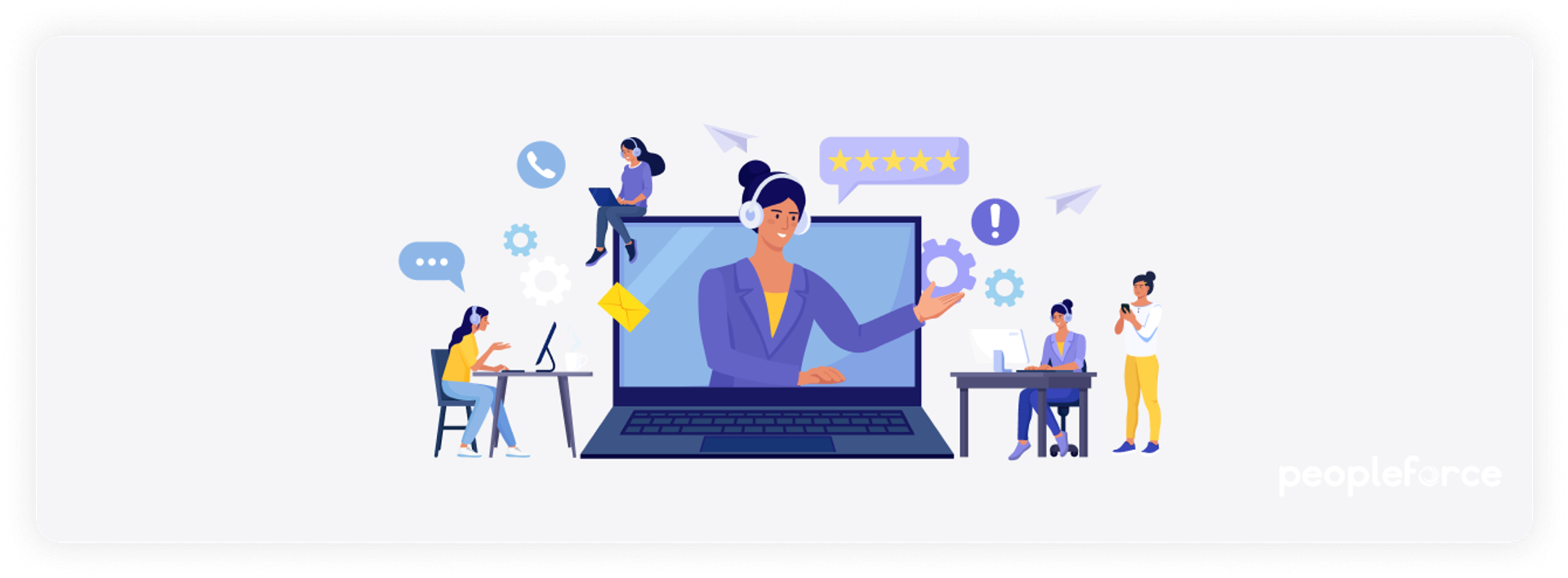
Why is employee engagement important?
Employee engagement results from the coincidence and alignment of personal objectives and values with the company culture to which one belongs. An engaged employee who is passionate about his work directs his intention and effort to the achievement of his work objectives, which are immersed in those of the organization. When talking about the company's success, human capital is a fundamental part. The organization grows, remains profitable in the market and achieves new goals. Engaged employees can empower the company. Unengaged employees can bring it down.
Improved productivity
The more engaged an employee feels the more their communication and collaboration skills grow, they are in a good mood and are positive in the face of challenges. Engaged employees feel motivated, they don't go to work just for the salary, they feel appreciated and valued for their contributions.
Constant innovation
The company needs to innovate in global markets in order to compete, be original and have better business outcomes. The engaged workers solve problems creatively because they are passionate about what they hope to achieve as a result of their efforts. Their leadership can influence other employees to innovate and transmit their enthusiasm to them. To further enhance their innovative approach, the company can create a QR code to seamlessly share their groundbreaking ideas and solutions with potential partners and clients worldwide.
To support this culture of innovation, the company should equip its teams with tools designed for different opportunities—whether it's networking, collaboration, or showcasing ideas. Online digital business cards can streamline introductions in virtual and in-person settings. Cloud-based whiteboards enable real-time brainstorming across time zones. Project management platforms keep global initiatives aligned and transparent. Even internal innovation hubs or idea-tracking apps can help capture and develop creative input from all levels of the organization.
Exceptional management
A good management practice is the result of the participation, involvement and engagement of the workforce. Employees who are not aligned with the company's values are not willing to accept their responsibility in uncomfortable situations. Constant and transparent communication at all levels of the company allows to align the personal values of employees with those of the company, creating a strong culture that is transmitted to customers and that allows the organization to succeed.
Increase the talent retention rate
Every company must have an employee engagement strategy to retain the talent of the workers who demonstrate quality in their work and passion for what they do. Highly engaged employees do not want to leave for another company. A higher employee retention rate demonstrates a healthy work environment, and a company with a healthy work environment attracts customers and people interested in working there.
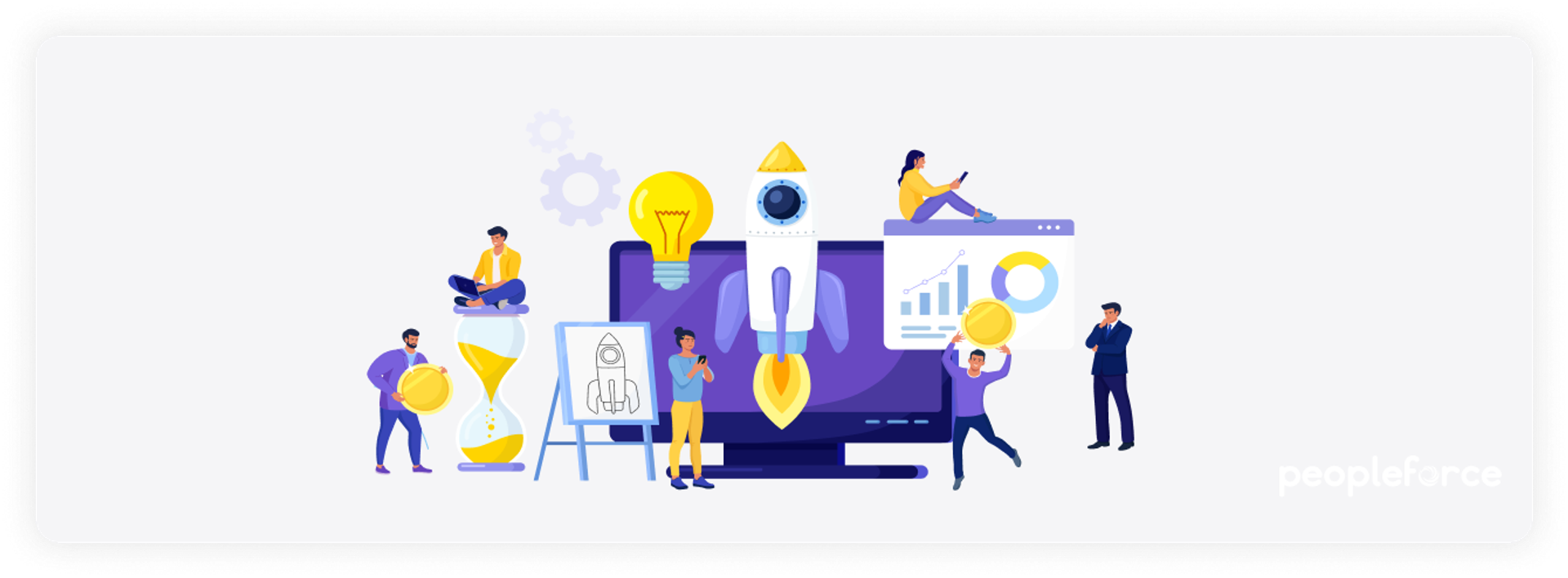
7 Successful employee engagement strategies
To drive employee engagement, salary should not be the only determining factor, the company needs to listen to the employee's voice. If employees believe that they can take initiatives and that these will be valued, they will be able to immerse themselves in their work to obtain better results. Therefore, the organization must develop employee engagement strategies, beyond fulfilling its obligation to pay wages and salaries, to incentivize and awaken the enthusiasm of its employees to align their personal values with those of the company and contribute to business results.
Here are 7 engagement tips that you can use as a reference to implement in your company or organization and boost employee engagement and employee retention:
1. Communicate clearly and transparently
Information should be communicated at all levels and directions to increase employee engagement. Changes, for example, must be communicated, at the right moment, to promote participation, avoid noise and speculation. They require a special accompaniment to drive employee engagement during the transition and start-up processes.
The job description, the tasks to be performed and the objectives to be achieved must also be communicated clearly and transparently, from the very beginning, in order to achieve collaboration and engagement. If people are not clear about these aspects, they will not be able to demonstrate a performance according to the company's expectations and will lose employee motivation as they will feel unappreciated.
Company culture must include open communication to sustain engagement. At PeopleForce we have a tool that facilitates your company's internal communication and helps in measuring employee engagement. Through this employee engagement software people can communicate, get news, leave ideas, and track their days off the next second they log in.
2. Promote 1:1 Meetings
Two-way communication between company leaders and teams can be done with 1-on-1 meetings and supported by software tools that facilitate inquiries, collaboration and constructive feedback. Improve employee performance with 1-on-1 meetings can be an excellent employee engagement strategy. Engage employees in an open dialogue about expectations, tasks and goals, career growth and let the system respond for a handy practical format.
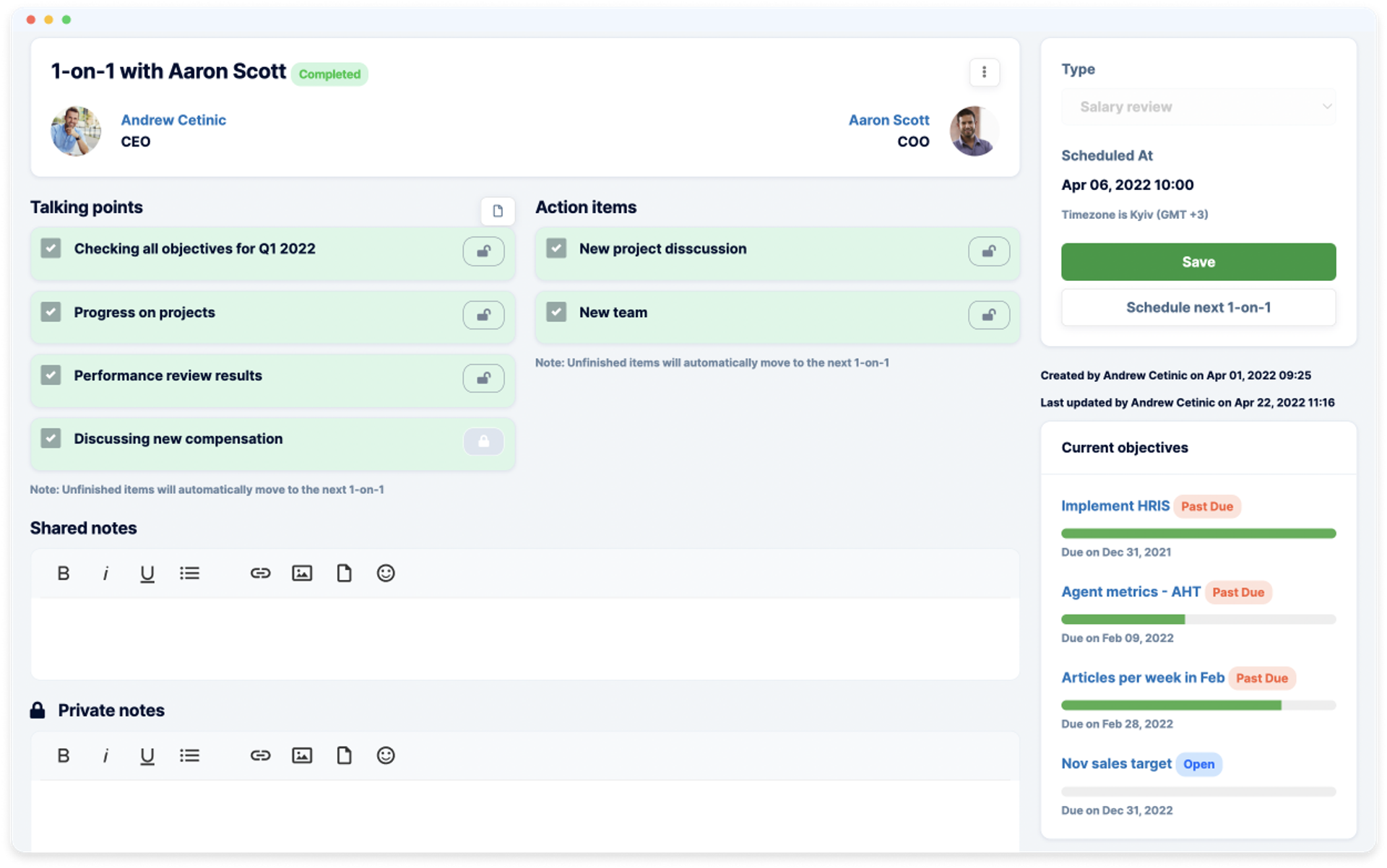
3. Enabling the reconciliation of work and family life
Achieving a work-life balance is currently a fundamental need for workers. Enabling a work environment in which both factors can be reconciled requires strategies that provide flexibility in the execution of tasks. Companies that ensure that their employees maintain a professional and personal life balance in their workplaces ensure happier, more productive workers, which leads to lower rates of absenteeism and higher levels of employee engagement.
Some of the employee engagement initiatives that employers can implement include:
- Provide comfortable spaces in offices for breaks, with the provision of games, drinks and snacks available to employees.
- Periodic active breaks, inviting employees to perform simple stretching exercises and massages.
- Flexible schedules and the implementation of strategies that prevent workers from having to perform work tasks during their free time.
- And value meeting objectives more than meeting schedules, favouring teleworking.
Employee happiness does not mean that employees are actively engaged, but it helps to improve the work climate and increase job satisfaction.
4. Prepare the employee onboarding process
The onboarding process of new employees must generate emotional commitment, it needs to be attractive and it must be able to reinforce the company's culture, influence opinions and motivate attitudes of employee satisfaction for having decided to belong to the company. PeopleForce allows you to customize and control onboarding in a single system. Adapt new hires to maximum efficiency for business outcomes.
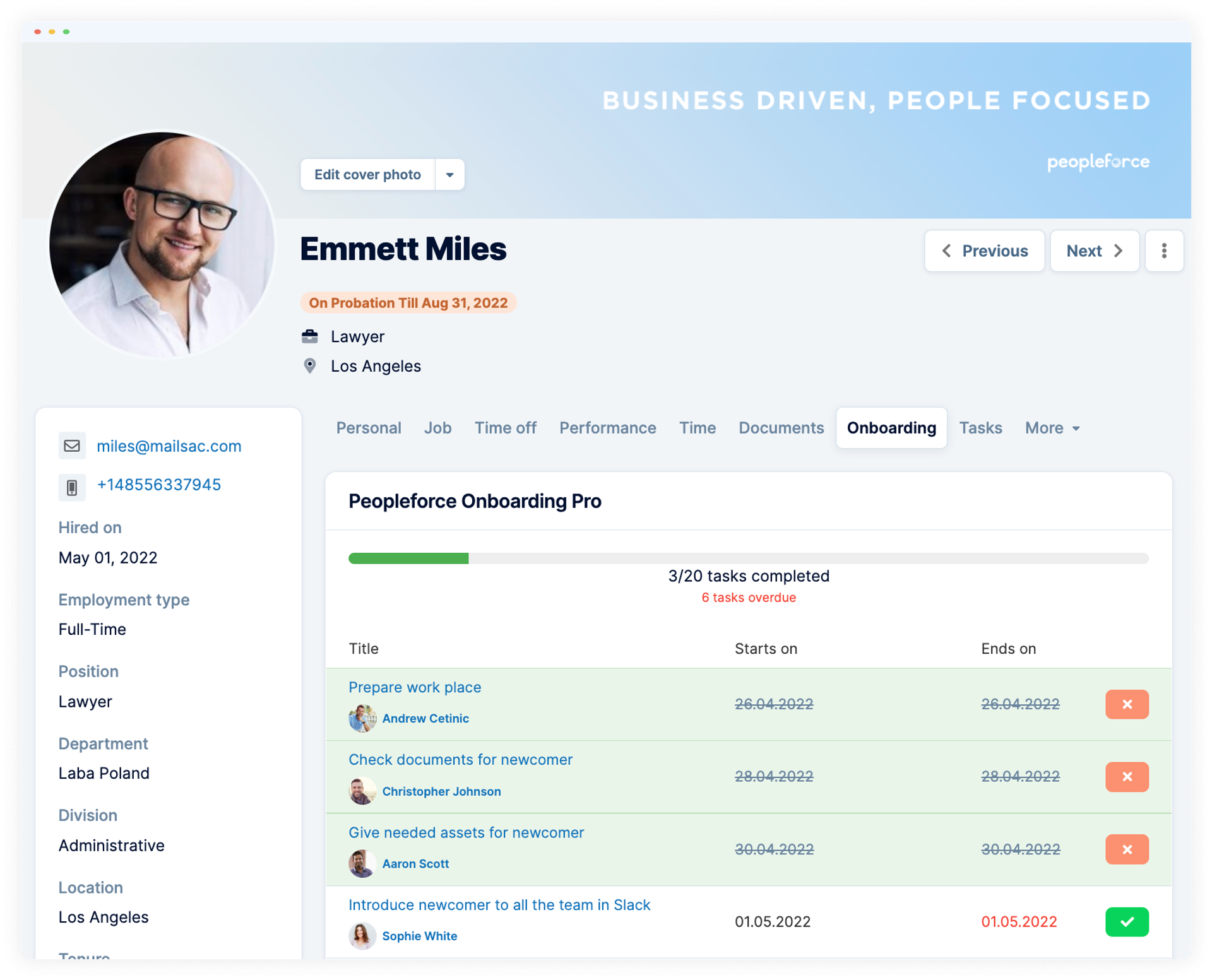
5. Create and plan employee engagement surveys
Knowing the success of your employee wellness programs by assessing the work climate is relevant to employee engagement. Frequent surveys are one way of measuring levels of employee engagement and knowing the employee sentiment about working at your company. Collect employee feedback through online and customizable human resources engagement surveys based on the information you really need to know to get to really understand your workforce. Measure engagement, know the level of employee satisfaction and motivation, learn and improve organizational success by analyzing insights.
6. Review performance
It is necessary for the company to evaluate the employee performance as a way of knowing how is developing the activities that have been assigned to him/her, since the person may or may not be suitable to perform them. By doing this evaluation, the company is on the right track to contribute to the fulfilment of its objectives and increase the employee engagement and motivation.
In turn, employees can engage in career development, obtain promotion opportunities or job opportunities more in line with their profile. Leadership skills can also be determined, as well as collaborative attitude and alignment with the company's culture. HR departments set performance management policies and the entire organization participates in the exercise. You can evaluate the effectiveness of employees in the PeopleForce system based on the views of senior leaders, line managers, subordinates and colleagues.
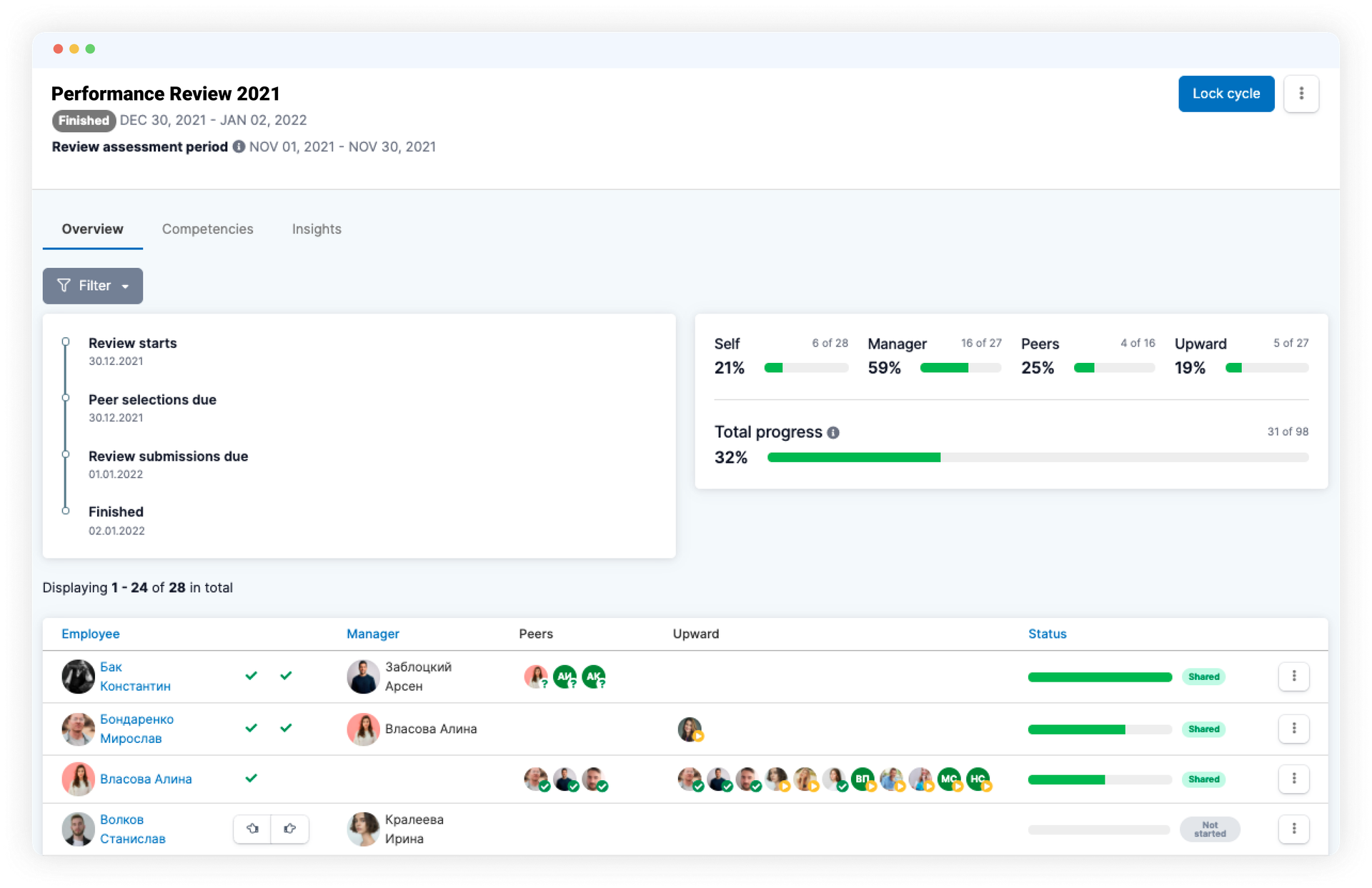
7. Recognizing performance
Continuous recognition of performance is indispensable because it is essential to create a relationship of trust between the manager and the employee. It is a good practice to satisfy the employee's need to know what he/she is doing well and what needs to be improved, especially when it comes to high-performing employees. Lack of recognition causes demotivation in individuals and work teams, but a recognition of achievements and performance is a simple strategy that drives employee engagement. Rewards, and bonuses aligned with goal achievement and benefits are employee engagement initiatives to provide job satisfaction and create the best employee experience.
Summary
- Employee engagement is defined as the enthusiasm or passion employees feel when working for their organizations.
- An engaged workforce will provide a better level of customer satisfaction, which allows companies to gain customer loyalty and earn higher profits.
- A good work environment is attractive to applicants and to the company's customers and helps reduce employee turnover.
- Employee engagement can be measured, without forgetting neither the interpretation of the results nor the necessary corrections.
- Improving the level of employee engagement involves a set of strategies that are easy to implement.
- Companies that ensure that their employees maintain a personal and professional balance in their workplaces ensure happier, more productive workers and lower rates of absenteeism.
At PeopleForce we provide you with human resources software for engagement analytics and continuous feedback.
Frequently Asked Questions
How do you increase employee engagement?
By developing employee engagement strategies and initiatives that connect employees with the organization, creating communication spaces, integrating them into the company's culture, training them and providing them with recognition throughout their life cycle in the company, from hiring to leaving.
What does employee engagement mean?
Employee engagement means that the workers are enthusiastic about doing their job, shows discretionary effort and adds value, are able to collaborate with their environment, and contributes to the objectives and goals for the business success.
What is an employee engagement survey?
It is an employee engagement research that measures the levels of engagement of the workers, it means, the degree of satisfaction of people within the company. Employee surveys are useful to evaluate the company's situation, identify unengaged and engaged employees and take corrective actions.
What are employee engagement metrics?
Employee engagement metrics measure the degree of engagement of your employees. Based on the results of the metrics, you will be able to understand the level of employee engagement in your organization, take the measures you consider necessary and formulate actions to benefit the employee engagement throughout the company.
How can an employee engagement platform help your company?
By taking advantage of the benefits offered by specialized human resources software, it is possible to streamline processes, facilitate the elaboration of tasks, improve the company's internal communication and, in general terms, provide a better work experience to increase employee engagement.
How to obtain employee engagement in the workplace?
Among the strategies that the organization should take to obtain employee engagement in the workplace are: prioritizing fluid and transparent communication that allows employees to feel confident, design comfortable office spaces, with ergonomic features that allow employees to feel comfortable and, finally, the work environment should be healthy, implementing policies that encourage employee motivation.
How to gain employee engagement remotely?
To obtain remote employee engagement it is important to trust in the capabilities of the collaborators. Well-defined objectives, organized work and flexible schedules are key elements for remote work to be successful and for employees to feel comfortable and engaged with the company. For this, it is vital to have digital tools that facilitate remote work and allow fluid communication at all times.
Get started with PeopleForce today
Automate your HR routine to create a high performance culture in your company. PeopleForce is your best HRM alternative to stay business driven but people focused.
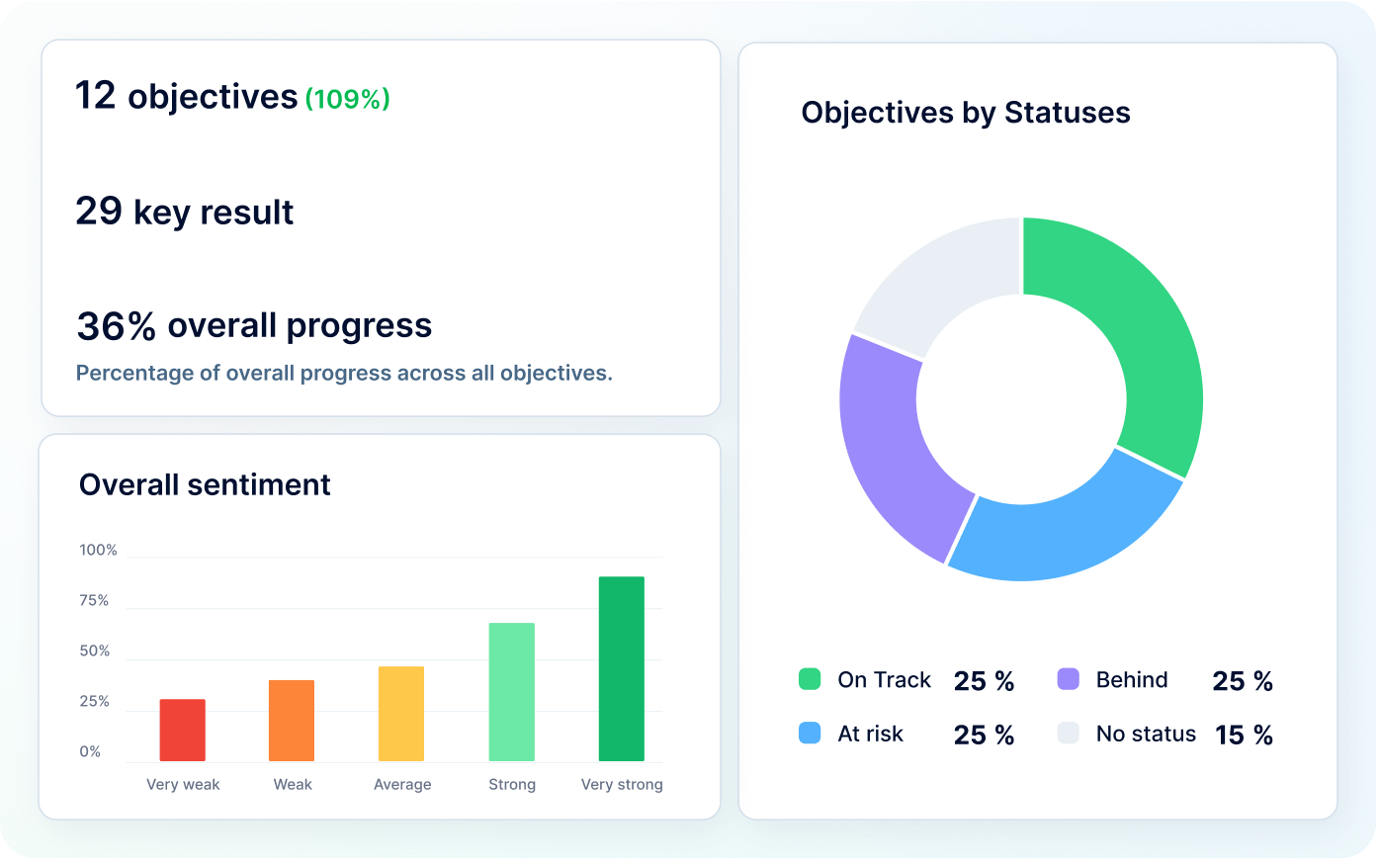
Recent articles
🎉 PeopleForce Wrapped 2025: a year of HR magic
2025 wasn’t just about shipping features — it was about making HR work better at scale. Let’s unwrap everything we built together.
OKRs vs. KPIs: Choosing the right framework
Unsure when to use OKRs or KPIs? Learn how to choose the right framework to maximize your team’s success.
Why OKRs feel like hell (and how to make them simple)
Why OKRs feel like chaos: missed goals, messy reviews, and burnout. Learn how to simplify goal-setting and reclaim clarity quickly.

